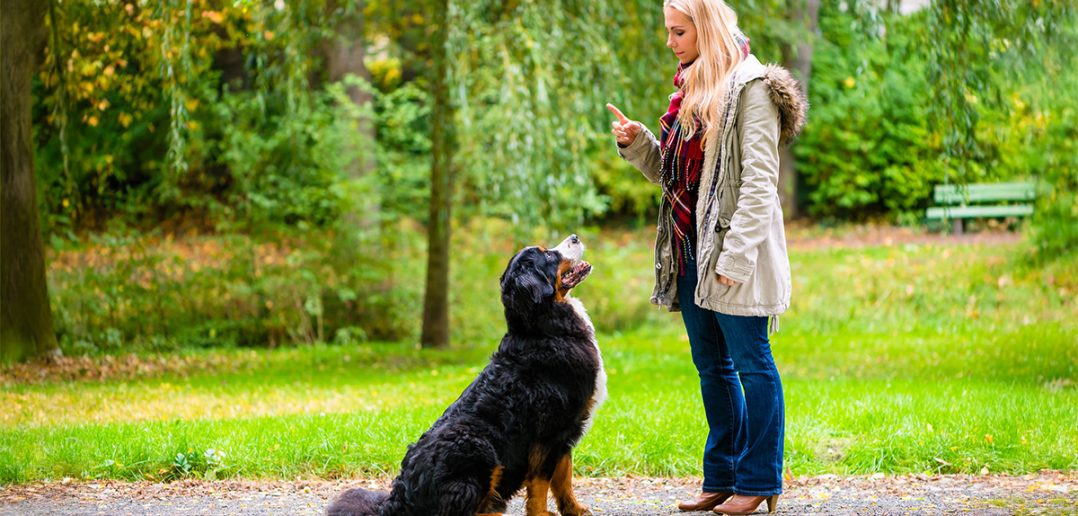Teaching your dog to sit is one of the first and most useful commands you can master together!
It’s simple, practical, and lays the foundation for good manners and more advanced training later on.
And yes, it really can be easy when you know how to do it the right way.
Before we dive into the steps, let’s cover the basics.
Why “Sit” Matters
The “sit” command isn’t just about showing off. It’s a foundational behavior that helps your dog stay calm and focused in everyday situations . . . like before meals, at the vet, or when meeting new people.
It’s also a great way to start building a communication loop between you and your pup. And once they get the hang of “sit,” other commands become much easier to teach.
What You’ll Need
- Patience and consistency – like most things with dogs, repetition is key. If you’re not in a calm, patient mood, you’re starting off on the wrong foot.
- A quiet space – with minimal distractions.
- A handful of small, tasty treats – think pea-sized, something they love but can eat quickly.
Use the Right Treats (They Matter!)
The key to getting your dog to do what you want often starts with their stomach. Dogs are more likely to learn quickly when the reward is something really exciting. They learn best when there’s a tasty, immediate reward.
Look for small, soft, high-value treats that your dog finds irresistible. You want something that’s big enough to feel like a reward, but small enough to eat quickly so they stay focused on the next cue.
For some dogs, tiny pieces of hot dog work great. Others might go wild for a bit of cheese or even a Cheerio. Just make sure they’re not large rewards that can cause weight gain over time and ensure they’re high-reward.
While we’ve used those things in a pinch or for short sessions, we honestly prefer to have out-of-the-ordinary treats that really grab our dog’s attention and are easy to dole out repeatedly in training. We love Zuke’s Mini Naturals (they have a lot of different flavors and pouch sizes) or Little Jacs small dog training treats (perfect for small breeds). Keep a handful in your pocket or treat pouch so you’re ready to positively reinforce good behavior on the spot!
Training is the one time your dog should feel like they hit the jackpot. Use the good stuff!
4 Simple Steps to Teach “Sit”
Step 1: Set the scene.
Take your dog, and your high-reward treats, to a calm, quiet space where you can focus. Hold a few treats in your hand to get their attention.
Step 2: Lure and cue.
Hold a treat just above their nose and slowly move your hand slightly up and back over their head. As their head tilts up to follow the treat, their rear will naturally move toward the ground. As you do this, say the word: “Sit.”
Bonus Tip: Add a Hand Signal
I find it really helpful to add a hand signal, particularly for big dogs. As you say “sit” you can also hold up one finger like you’re signaling the number one. Be consistent, use the same exact gesture every time. Over time, your dog will respond to the signal alone. Holding up one finger is a clear, consistent visual cue that pairs well with this command and can come in handy in noisy environments or if your dog experiences hearing loss later in life.
Step #3: Reward immediately.
Wait for your dog to sit. As soon as their butt hits the ground, even if it’s just for a split second, mark the behavior (a click, or a cheerful “Yes!”) and give them a treat. Praise your dog for getting it.
Step 4: Repeat and reinforce.
Practice for a few minutes at a time, a few times a day. Once your dog starts sitting reliably with the lure, try asking them to sit with just the verbal cue and the “Yes!” reward. Gradually phase out the treat and save those for additional training sessions.
Troubleshooting Tips
- If your dog jumps or backs away, lower the treat closer to their nose or slow down your hand movement. The goal is to get your dog’s rear to touch the floor, even if only for a split second.
- Be patient. Some dogs need a few sessions to fully understand what you’re asking.
- Avoid pushing your dog’s rear down, it can be uncomfortable, confusing, and ultimately unproductive. You want the behavior to come from your dog’s own choice, not from being physically manipulated. That’s what builds understanding, not just fear-based obedience.
Once They’ve Mastered It . . .
Once your dog knows how to sit, you can start using it in more real-life situations, like at the door before walks, before crossing the street, or when guests arrive.
From here, you’re ready to move into the other five basic commands like stay, come, or lie down.
For a solid next step, check out Essential Dog Training Tips — it covers the core commands every well-mannered pup should know.
For more on building great training habits, check out:
4 Keys for Dog Training Success
7 Dog Training Methods: What Works (and What Doesn’t)
Teaching your dog to sit may seem simple, and sometimes it really is, but it’s also the beginning of something bigger: a stronger bond between you and your dog built on trust, patience, and positive reinforcement.
Stick with it, celebrate the small wins, and enjoy the process!




